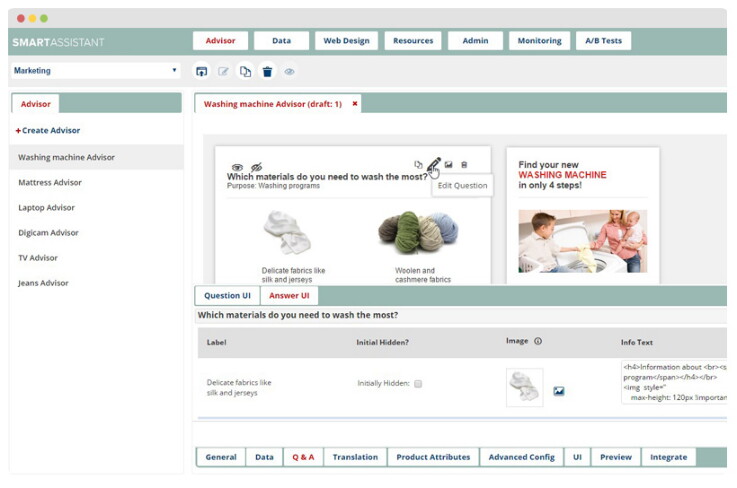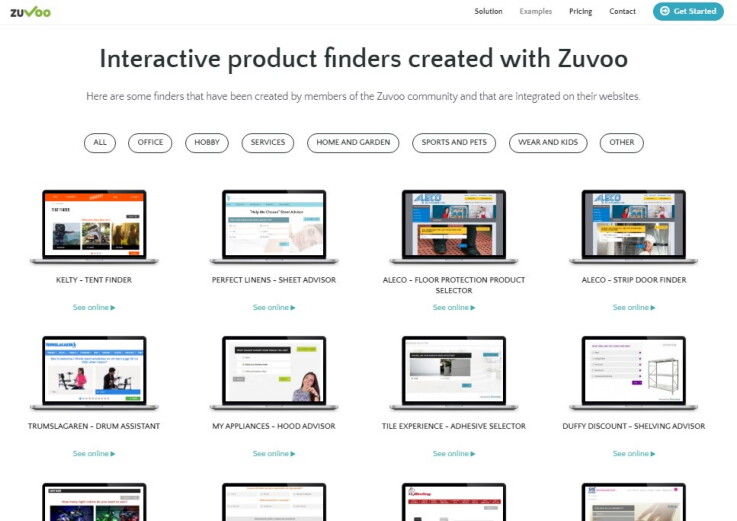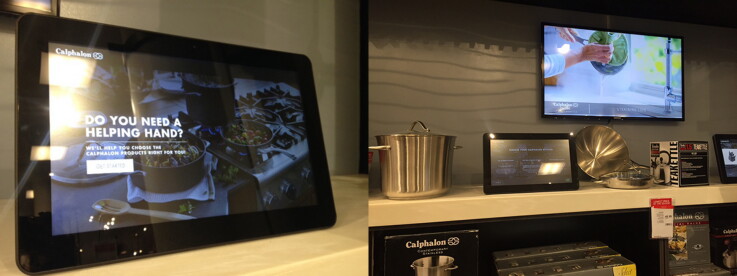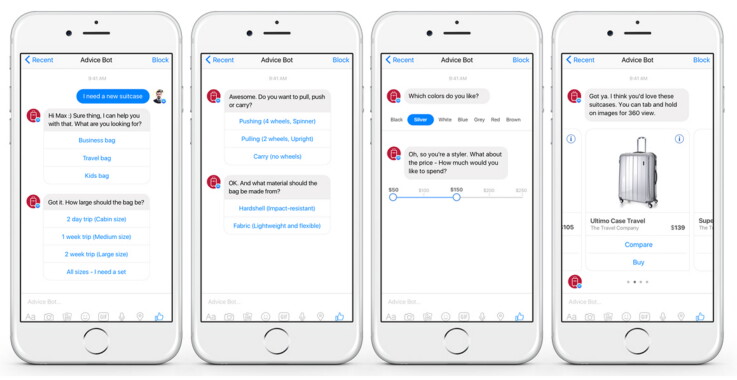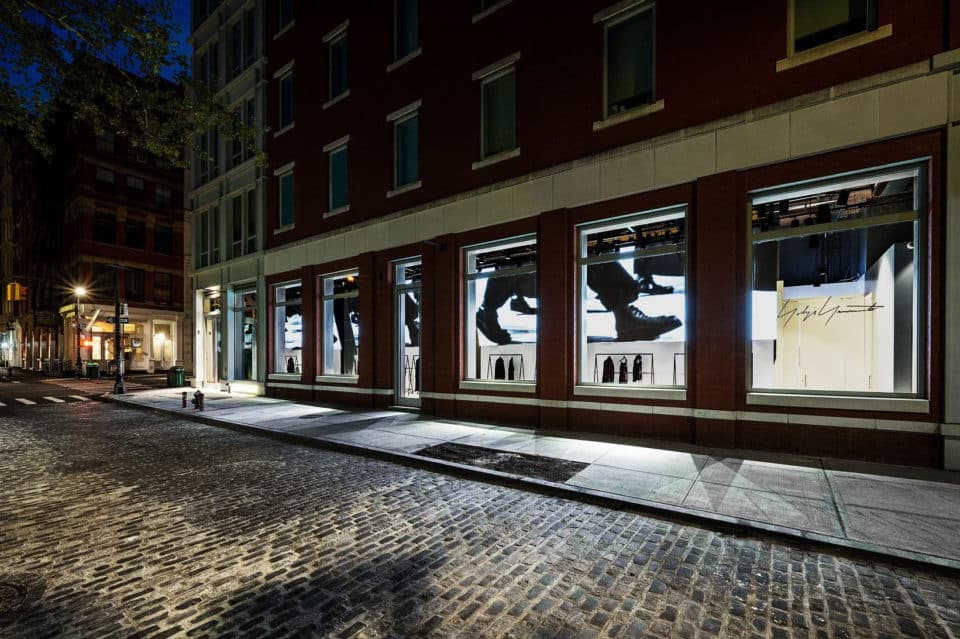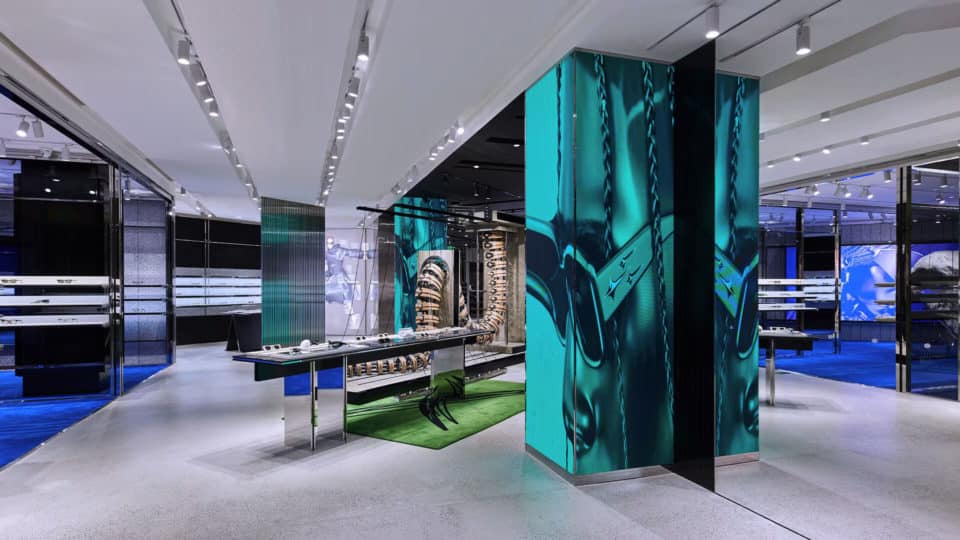The right choice: CEO of SmartAssistant, Markus Linder on helping customers make better decisions

Imagine your own personal shopping assistant helping you make the right decisions whatever you’re buying from wine to mattresses. Such is the idea behind SmartAssistant whose digital advisors are empowering customers to make better purchasing decisions, and get a more personalised service from retailers.
Explaining the negative impact of decision fatigue, CEO Markus Linder shares his thoughts on why customers are looking for trusted partners and long-term relationships. And how giving them the tools to make the right decisions for them can have huge benefits.
Can you explain what SmartAssistant does?
We love helping people make decisions and develop technologies to help them do that. If you’re shopping online today you’ll be confronted with many choices and options. And oftentimes, there are just too many to be able to make a confident purchase decision. Imagine your washing machine just broke down and you needed a replacement. If you’re not an avid washing machine enthusiast or expert, the different brands, technical specifications or marketing terms will simply confuse you. What spin speed is right? Which noise level is appropriate? And what’s “SpeedPerfect”?
With SmartAssistant, we provide businesses with solutions to guide consumers through this complex decision and purchasing process in a way how humans approach decision-making. What SmartAssistant does is find out what kind of needs a certain customer has torecommend products thatmeet those needs best. The digital advisors work like a knowledgeable sales person. They ask relevant questions to understand your needs, explain different features and functions, make you aware of important options you may not have considered, and ultimately, suggest the most suitable products, services or solutions.
For example, if you wanted to buy a new mattress today,you’d have to choose among a variety of options such aslatex, innerspring, memory foam, and more. Many people have no clue what type of mattress they need. Instead of making them take a stab in the dark, a SmartAssistantadvisor would ask them, “Do you sleep on the back? On your side? On your front? What’s your weight? Do you feel hot at night time? Do you sleep with open windows all year round? Do you have allergies?” and based on theiranswers, it would recommend the mattressesthat are just right for each individual.
As opposed to filters or faceted search options, Smart Assistant advisors don’t follow a feature-focused, but a strictly customer-focused approach. It’s about putting the consumer first. To increase trust, the digital advisors would also explain why a certain mattress has been suggested and recommend alternatives whenever the perfect match isn’t available.
The reason why shoppers love to use SmartAssistant advisors is that it streamlines their decision-making process. They don’t need to do a massive amount of research to decipher different options. SmartAssistant asks them the right questions and provides them with the right context and background information they need to make a great decision.
If you observe how access to information has changed consumer behaviour, you’ll notice that many consumer have no patience for businesses that make them jump through hoops to purchase anything. These consumers will simply take their business elsewhere. You’ve got one shot to impress. Simplification and providing an “Ease of shopping” experience are paramount today.
Easier decisions make for greater sales
What are the benefits for retailers?
SmartAssistant is used across industries, such as manufacturing, telco, finance, insurance,B2B services and more. But a key benefit specifically for retailers is an increased conversion rate. Our clients can see uplifts of 30% – 70%, which can be much higher, especially in complex product categories or high-ticket items. Another opportunity that is leveraged by our clients is upselling. By asking shoppers questions that refer to their needs, retailers are able to sell benefits not features. Yes, features sound great, but truth be told, most people could care less about features. They care about the immediate value for them and how purchasing a product would benefit them. If they don’t understand a feature, they’re less likely to show any interest. However, if they do understand the added benefit that feature brings, chances are that they would decide for the product, even ifit came at a higher price point.
With SmartAssistant retailers able to uncover latent needs, leading to upselling opportunities of 10% and up. For example, take a consumer who wants to buy a new printer. One question in the digital advisor could be “Do you want to print directly from your mobile device?” with some need-oriented explanations of that particular feature.The consumer who wasn’t aware of this option might think, “Oh wow that’s cool. Didn’t know this was possible. Let me say yes to that”.Another consequence apart from upselling is that shoppers don’t feel sold to, but advised, which in turn, increases their purchase decision confidence and leads to fewer returns.
How do you determine what questions are asked?
SmartAssistant advisors are usually fed by product experts in a company. These are product managers, marketers, sales reps or simply people in a company who know their products and the shopper’s decision-making process. The SmartAssistant platform allows these business usersto define the questions, the underlying advisor logic and the advisor flow in an intuitive interface. There’s no dirty hacking, inflexible product-to-answer mapping or fumbling with code. Instead, business users can create questions and answers in a CMS, drag and drop questions and define rules to determine and trigger the recommendations. You can set up a basic advisor in a couple of hours.
If our clients are not sure which questions to ask, they can access jumpstart templates that are available in several product categories as well as the SmartAssistant network of partners who can support them in finding the appropriate questions to ask and defining a strategy. In addition to that SmartAssistant users have access to performance best practices, advisor analytics and insights, A/B testing, andadvisor monitoring to assist them as they optimise their advisors over the course of time.
Are there some categories of retail that you think would benefit more from using SmartAssistant than others?
We believe that SmartAssistant can be used in virtually any product or service category. Very often, we ourselves are being surprised by our clients and the product categories in whichthey use our solution, from electronics to sporting goods to telecom services to fashion. There are even pain relief advisors and quit smoking advisors out there. We’ve recently launched ZuvooFreemium, a solution that’s based on SmartAssistant technology, which allows small retailers to create digital advisors for free. We’re seeing lots of highly specialised advisors and very interesting concepts arising from that.
In general, thehighest engagement with digital advisors can be seen in product categories that are either complex such as laptops, drills, and washing machines or emotive such as bed linens and furniture. And the highest conversion rate uplifts are usually generated in non-everyday product categories, where products are not being bought as frequently such as mattresses or pushchairs.
Whenever businesses think about integrating digital advisors, we advise them to examine their traffic sources. We don’t recommend using SmartAssistant if around 90% of your traffic comes from price comparison sites. These shoppers already know exactly what they want to buy. They don’t come to you for your customer experience. They don’t come to you for your advice and expertise. They come to you to get the lowest price.
Becoming the go-to expert
Could you share your thoughts on decision fatigue and how this might affect sales for retailers?
People experience decision fatigue when they feel that a decision is too complex to make,causing them to postpone that decision or not make any decision at all. It’s simply self-protection from buyer’s remorse. This obviously has a negative impact on the sales of retailers and brands.
Just recently, I stood in front of the wine shelf ina supermarket, not knowing which of the seemingly a 1,000 wines to choose and not having anyone to ask for advice at hand. In the end, I was too overwhelmed and decided to choose no wine at all. I caught myself wishingthe retailer had a SmartAssistant advisor asking me questions like, “For which occasion do you want buy the wine? Do you want to serve it for the starters, the main dish or with dessert? Are you going to serve chicken, fish, vegetables?” and then coming up with a recommendation for the right wine available at that store. This would certainly have helped me overcome decision fatigue, make a confident decision faster, get the retailer a satisfied customer and my relative a much better birthday present.
On that note, is SmartAssistant being adapted to be used in stores? How does that work?
SmartAssistant is a true omnichannel solution that’s not only usedon e-commerceorbrand website, but also in call centres and even offline, either on the mobile devices of the shoppers or in-store kiosks. So shoppers getconsistentadvice across all channels, which is very important for many of our clients.
In-store is a very big topic for us. We see that more retailers are eager to integrate technology to improve the in-store experience. They integrate SmartAssistant advisors on self-service kiosks or tablets that are either used by shoppers or store associates.
And as more shoppers use their mobile phones in-store, SmartAssistant is also an opportunity for retailers to engage these mobile in-store shoppers. Retailers can send shoppers who linger in a specific store section a push notification, offering them to start an interactive advisor directly on their phones. These shoppers can receive product recommendations for product that are available at that store, in other stores nearby or online. It’s an opportunity for retailers to provide shoppers with the benefits of endless aisles.
Can retailers benefit from the insights that you’re getting about their customers to better understand them?
Yes, absolutely. With SmartAssistant, retailers can gain valuable insights to personalise their offer. A recent IBM study showed that consumers are willing to share information if they get value in return. The immediate value for customers who use SmartAssistant advisors are time saved and less hassle choosing the right product. But it goes further than that. By answering questions, a consumer explicitly states what they have, want and need. It’s valuable information that usually only comes to light via market research. This can help a retailer better understand their customers to tailor the content and personalise the experience further. For example, by sending tips on how they can make most use of the product they’ve purchased related to the intended usage and needs they’ve expressed in the advisors.
Do you feel like there’s a shift back to stores and staff being experts and able to give people advice?
That’s a very valid point. I believe the true challenge for retailers that want to build a relationship with their customers and gain their loyalty is to evolve from product pushers to insight providers. They have to transform into being trusted advisors who know their shoppers well enough to suggest relevant products, solutions and tips without being creepy or overbearing. Acknowledging and understanding the shopper’s individual needs is the main factor. And using this understanding to share relevant, helpful, useful and trustworthy advice is crucial. It goes back to the effect of choice and information overload. Many people long for experts who help them save time, understand and do things better.
Knowing your offering
Are there any companies that you feel are using SmartAssistant in a really interesting or effective way?
All our clients have truly unique approaches and interesting angles and if necessary we support them to get the most out of their advisors for a fast ROI. One customerfor example is Newell Brands, a Fortune 500 company in the US. What’s particularly interesting about them is that they aresyndicating their digital advisors toretail websites, but are also using them in-store at their retail partners. They created advisors that are not only used at a single but multiple touchpoints. It’s a great way to ensure their brand message isn’t diluted and customers receive consistent advice whenever and wherever they are. It’s a very exciting case that we’ll be seeing more often.
On our product advisors, we showcase different product advisors and your readers can contact us if they want to access specific case studies.
What are the potential reasons that SmartAssistant might not work at its optimum?
SmartAssistant is always only as good as the product information that’s available. Just think about it, you can only advise shoppers on products, if you yourself know what you’re selling. This means product attributes, specifications and features must be available. If a product only has two or three distinct features or if there are only a handful of products, a digital advisor may make less sense.
Consistent and structured product information is still a major pain point for many retailers and I doubt that it will be solved all too soon. That’s why we offer services to help retailers clean, complete and structure their product data so they are able to leverage SmartAssistant.
SmartAssistant is described as a future proof solution – can you elaborate?
Well, we invest a lot into research and development to offer a complete solution for the omnichannelthat makes it very easy for retailers to setup and manage digital advisors. This also includes automation support and sophisticated insights. While we focused on retail and digital product advice during this interview, the SmartAssistant Digital Advice Suite offers solutions for the entire customer cycle as well as varied departments from sales, and marketing to customer service. We are continuously expanding our technology’s capabilities such as by need-based personalisation features or product bundling to recommend compatible products from different product categories.
Consumer behaviour is changing very quickly. New trends and technologies emerge, some of them fads but many influencing and shaping how we shop and decide. Businesses are forced to adapt and either move with the time or be moved by the time. They need solutions that are able to grow with them and support them to take advantage of new technologies and opportunities.
Take conversational commerce or Chatbots for example. This year it took off and created new opportunities for businesses to engage and communicate with shoppers. At SmartAssistant, our innovation teams are exploring and implementing different approaches, some simpler, some more sophisticated, to allow retailers and brands to advise shoppers through this Chatbot approach. It’s a very interesting and promising topic and with SmartAssistant our clients are able to quickly tap into these kinds of emerging, new fields.
Images courtesy of SmartAssistant

